November 20
SaaS Usage-based Pricing Model Overview
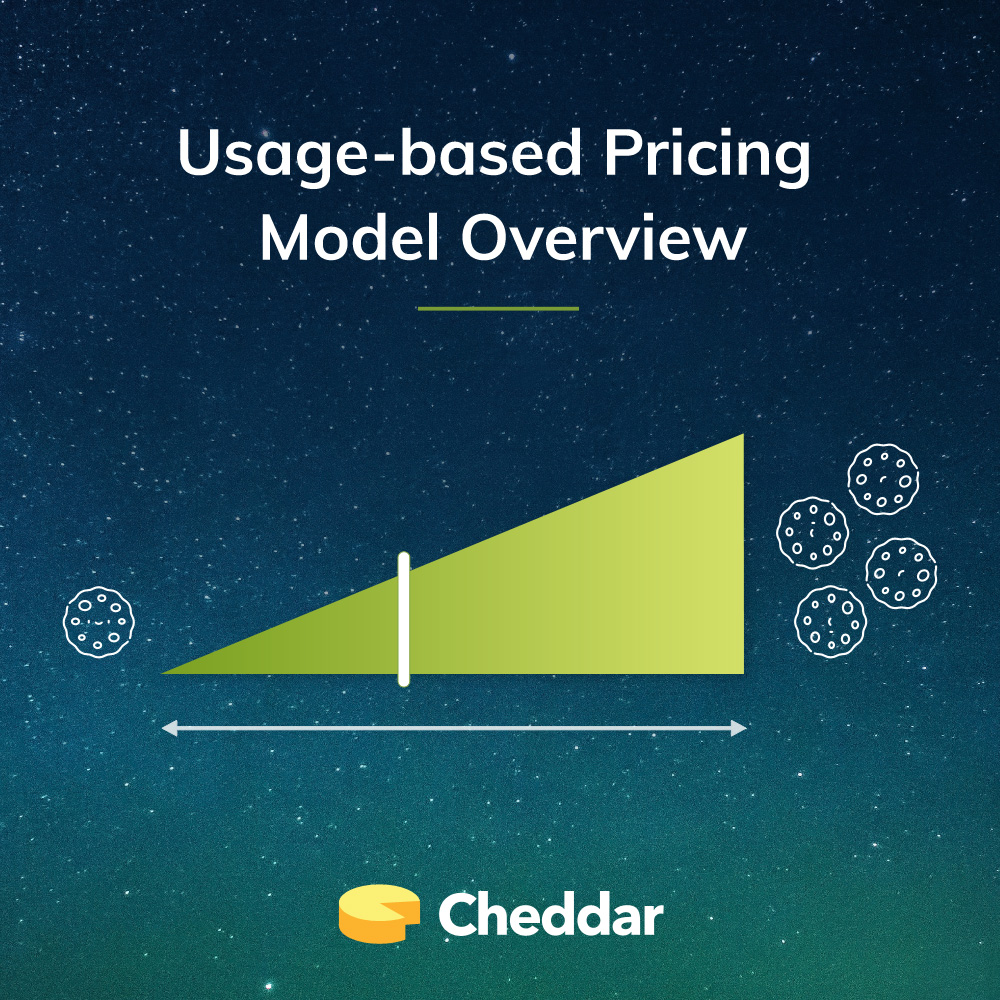
A lot of SaaS companies are using a usage-based pricing model and don’t even realize it. If your customers don’t all pay a single, flat rate, it’s likely you’re using some sort of SaaS usage-based pricing model. Even if you don’t have pricing yet, you’ve probably even considered adding a usage component to your pricing.
What is usage-based pricing? We define usage-based pricing as: A pricing model in which the amount that a customer pays is affected by how much or how many of something a customer uses. Although similar to usage-based billing, usage based pricing is simply the way in which a customer’s bill might increase or decrease based on usage. Here’s a look at some pricing pages with a usage component to pricing:
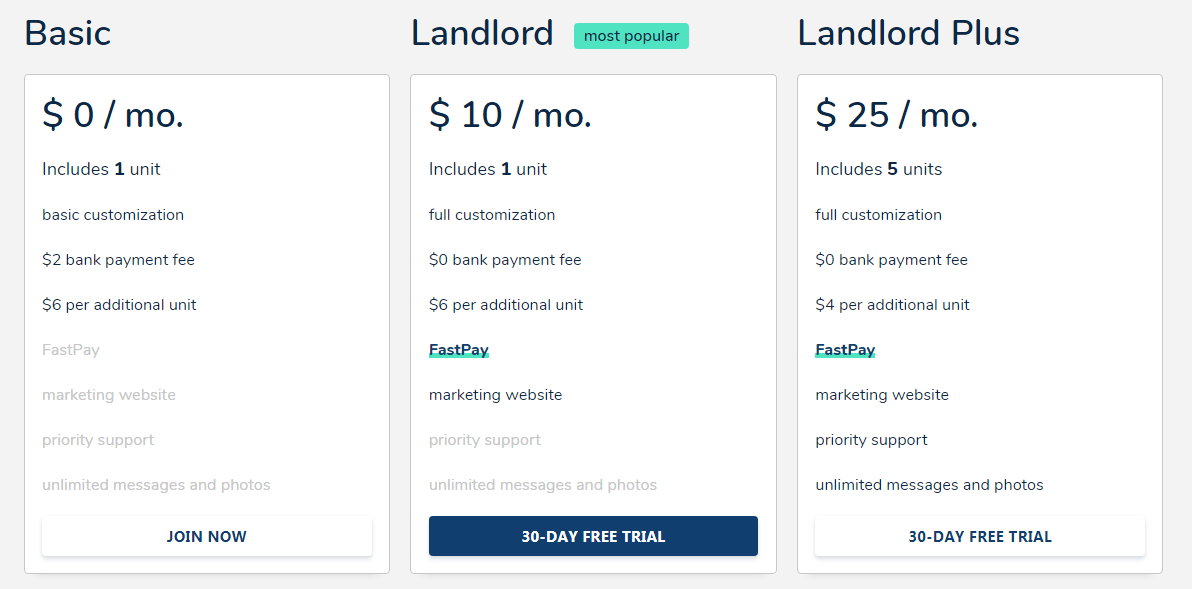
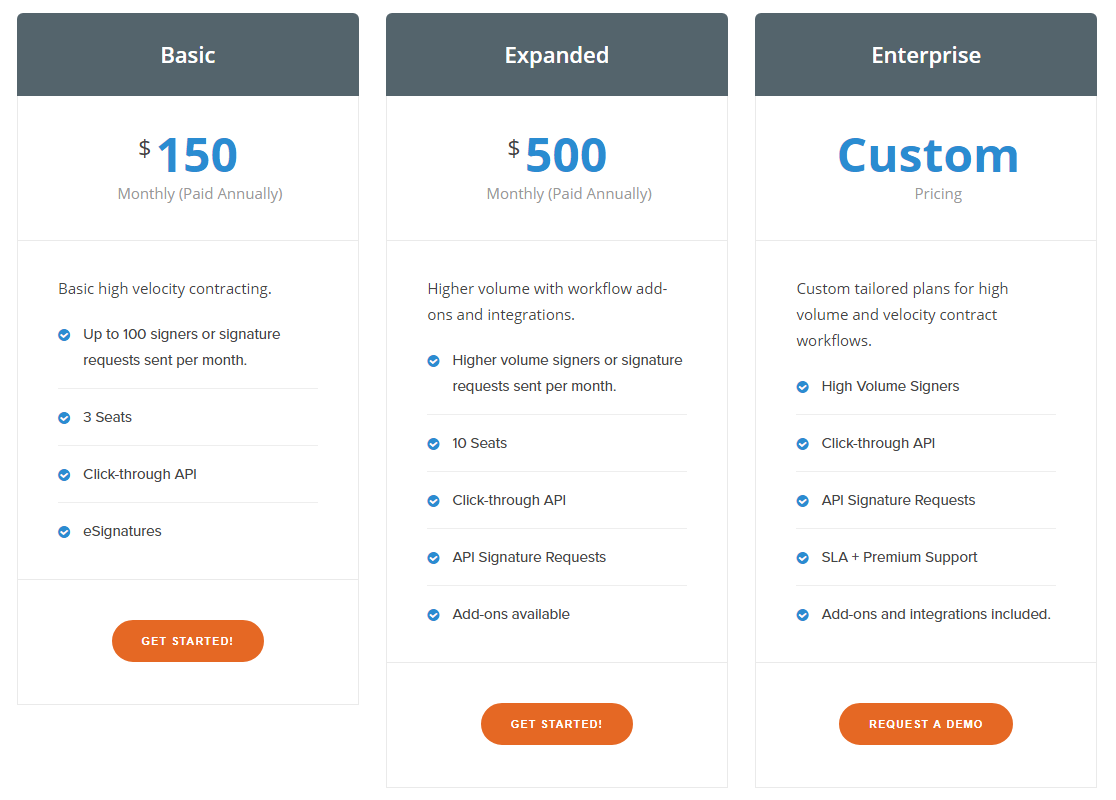
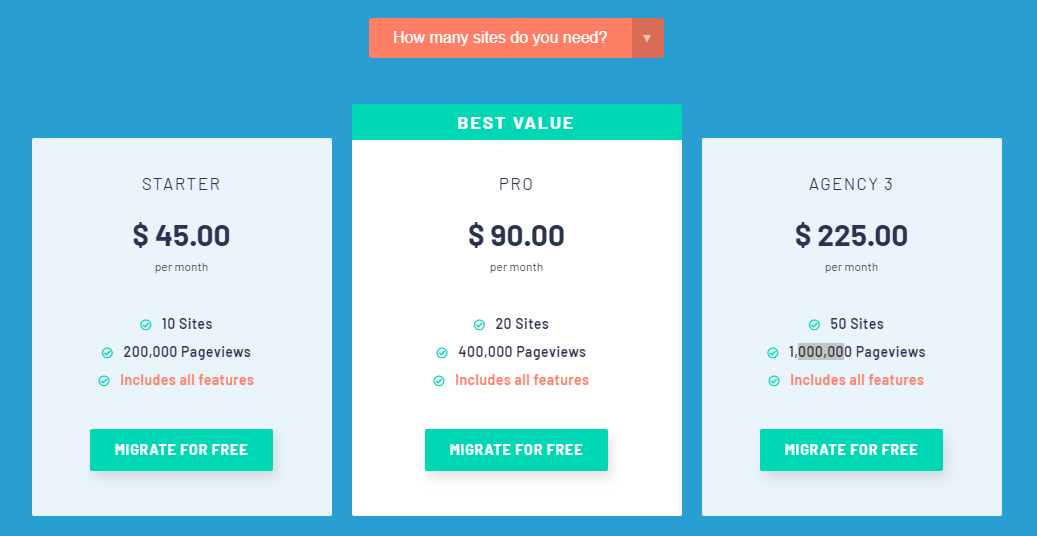
(via PactSafe, Avail, Pressable)
It’s important to realize that with pricing, the more granular you get, the easier your pricing actually is to understand. As you remove options, it become more clear to customers which pricing plan they fit in to. As a result, as you break down your pricing to charge for usage, you can appeal to more customer segments. Customers of all sizes have a pricing plan that caters precisely to their needs.
While there’s many ways to incorporate usage to your pricing, the most common SaaS usage-based pricing models are:
Click on a model to skip ahead.
As you move from a tiered model to a linear model, you start removing tiers and flat subscription fees. This allows you to charge your customers more granularly. As you get more granular, your pricing scales better from small to medium to large customers. Your pricing can also become easier for customers to understand, as they have less options to weigh when selecting a plan.
Now, we’ll walk through each of these usage-based pricing examples, and some of the advantages and considerations for each.
Usage Tiers
Whether you realize it or not, tiered pricing is a common form of SaaS usage-based pricing. Even if you are charging a flat rate for each “tier”, the goal of tiers is generally the same. Small customers pay less than medium customers, and large customers pay more than medium customers.
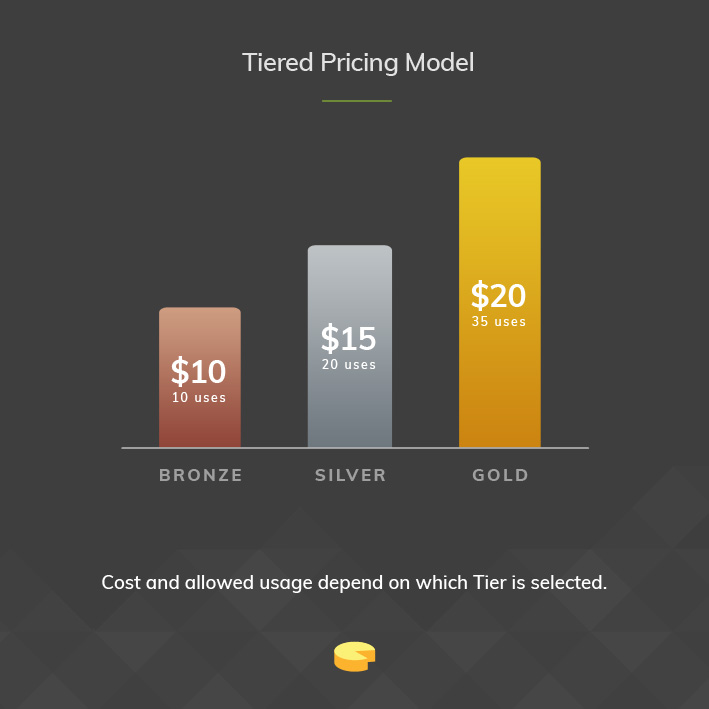
Although with tiers you probably don’t bill linearly, you likely limit customers’ usage in one way or another. Here’s an example pricing page of a tiered pricing model (via Moz):
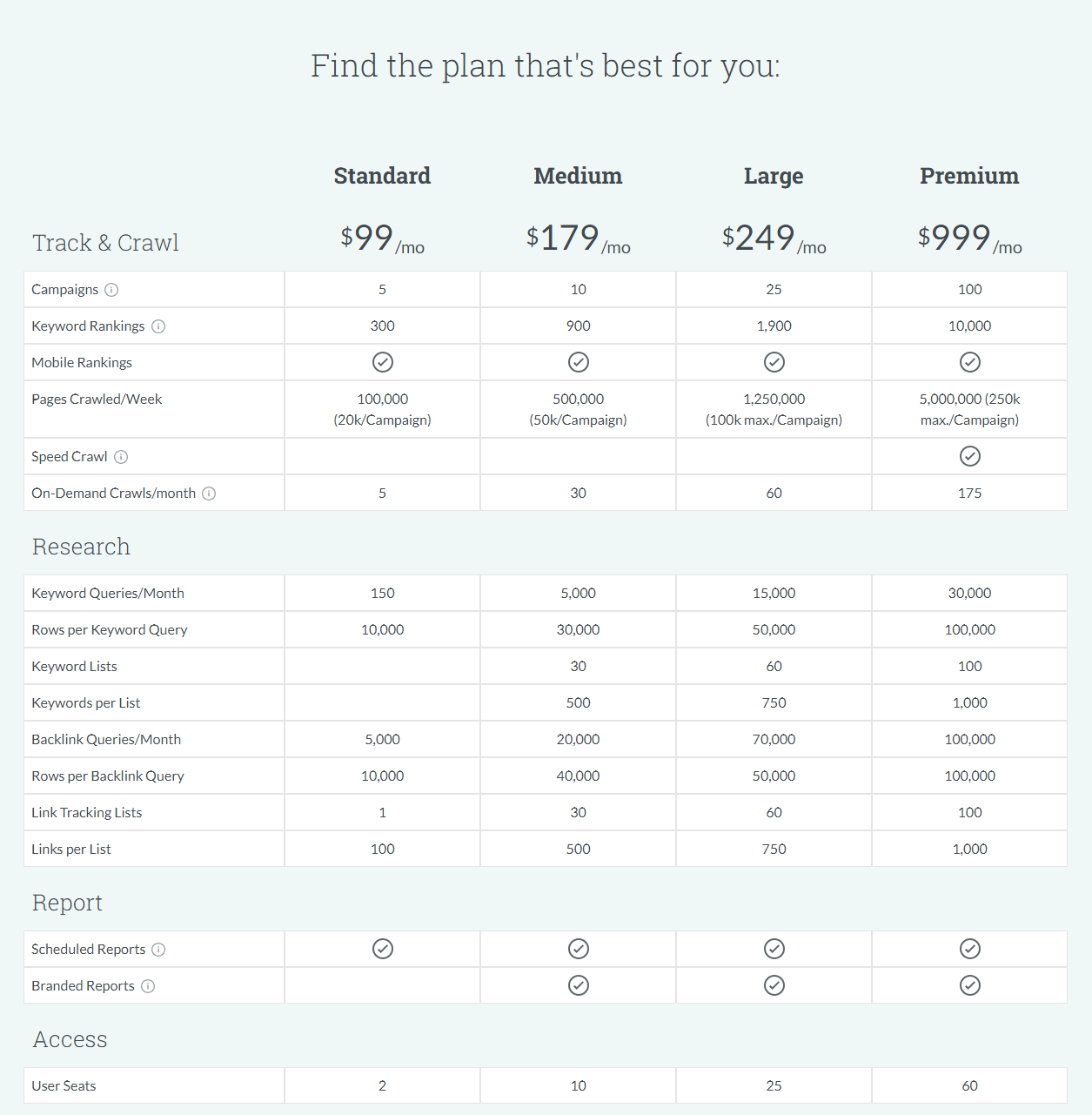
With this model, customers are limited in many ways:
- Number of campaigns
- Number of keyword rankings
- Seats
- Restricted access to certain product features
While Moz doesn’t charge “per X action”, they still have to track how much of “X action” a customer takes. Now let’s take a look at some of the advantages and considerations when choosing a tiered pricing model.
Advantages of Using Usage Tiers
When compared to an all-access flat subscription model, tiered pricing can be a great addition to help your company’s pricing. This SaaS pricing model allows you to have multiple price points. This generally allows you to get more from larger customers while still being able to provide value to smaller customers. Some of the advantages of usage tiers are:
Locking Features
Creating different features, or providing more advanced support to customers, costs your company more. Placing these features inside of tiers, or packages, allows you to charge more to customers who cost your company more.
Capturing more from customers
By creating multiple plans for customers to choose from, they are able to select which plan best suits their needs. This allows you to capture customers who need fewer features or who use your product less. This also allows you to cater your product to more customers, while still maximizing the revenue from each.
Upselling customers
Depending on how you end up structuring your pricing, creating pricing tiers allows you to upsell customers. Growing customers often end up between pricing plans. If you know who is on the edge of a tier, you know who might be open to an upsell.
Usable with other SaaS pricing models
Although a tiered model is a usage-based model by itself, its also possible to use other models within each tier. For example, within each tier, you may offer an option for customers to pay for overage (think traditional cell phone data plans). You can also use tiers to allow for free users.
Considerations When Using Usage Tiers
Although setting up tiered pricing seems simple, that doesn’t make it easy for your customers. Every customer has different needs. Depending on these needs, tiered pricing could potentially cause some problems.
Analysis paralysis
If you have a complex product, or offer too many pricing options, customers may be unsure which plan they fit into. Many companies attempt to counter this by highlighting a “most popular” pricing plan. This still might not be enough. New customers may not need or even want everything your company provides. If a customer doesn’t know what to buy, they may go searching for a different solution.
Creating proper segments
Are customers really using your product the way you think they are? With every product, different customers will use your product in different ways. When you create tiers, it’s important to be sure that each tier corresponds correctly with a customer segment.
When segmenting features, certain customers might need some features and not others. Be sure to test different tiers of features. Just because you understand the value you provide doesn’t mean customers do. Your customers also might not be willing to pay for a more expensive plan just to unlock the feature that they need.
Subscription + Overage
The 3 part tariff has become a popularized pricing model. With this model, a customer pays a flat subscription which gives them an ‘allotment’ of usage. If a user exceeds this usage, they are charged for additional usage. Studies show that this model can increase user usage by as much as 15%.
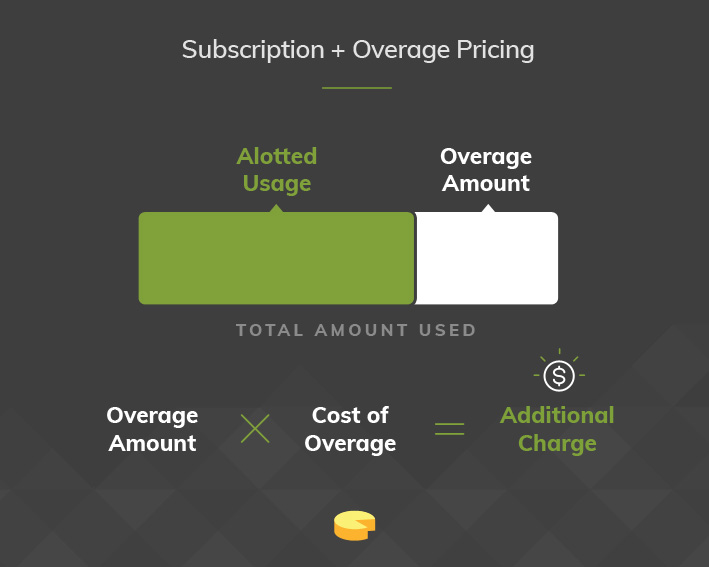
A SaaS example of this pricing model is TextMarks. TextMarks is a SMS platform for businesses to send text messages to their subscribers. TextMarks has also incorporated pricing tiers which segments customers into different pricing plans. Here’s a look at their pricing page:
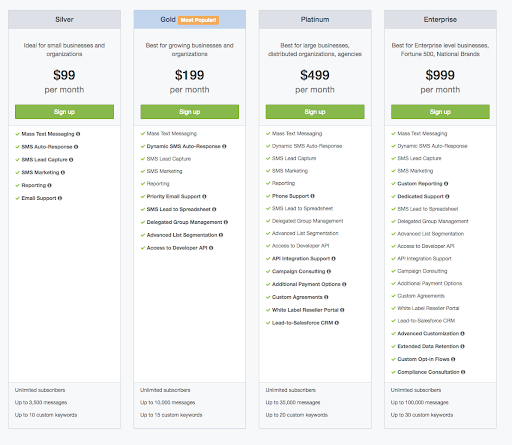
TextMarks charges a base subscription for each of their plans, limiting the number of messages and keywords available on each plan. If you need to exceed this number, however, you can pay for for overage rather than upgrading tiers.
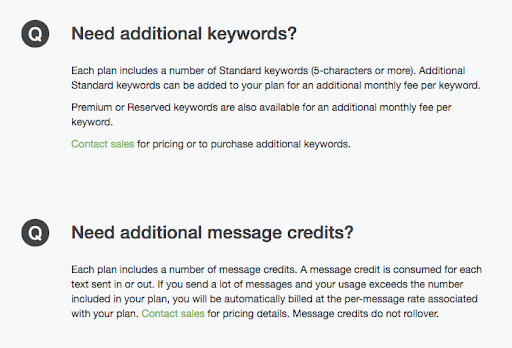
Advantages of a Subscription + Overage model
With a flat tiered model, you might leave some money on the table. By getting more granular and charging customers for overage in addition to their subscription, your company might be able to attract more customers, and keep more customers that don’t want to upgrade to the next pricing tier. Here’s some other advantages of using a subscription model and charging for overage:
Increased usage levels
When a customer pays up front for an allotment of usage, the cost of that usage is effectively a sunk cost. Assuming users stay below their allotted usage, customers don’t need to weigh the marginal cost and benefit of each “use”. Customers can use as much as their subscription allows with no additional fees until they exceed their allowed usage.
Capture customers between pricing plans
As your customers grow, there will be a point in time where they are caught in between pricing plans. With a a traditional tiered model, a point comes where an additional “use” results in a large increase in cost. Typically, however, this only creates a small increase in value. It may be difficult to justify spending an additional $500/ month just because the usage limit has been reached. Charging for overage smooths out marginal cost when caught in between pricing plans. This can result in a lower churn rate for your company.
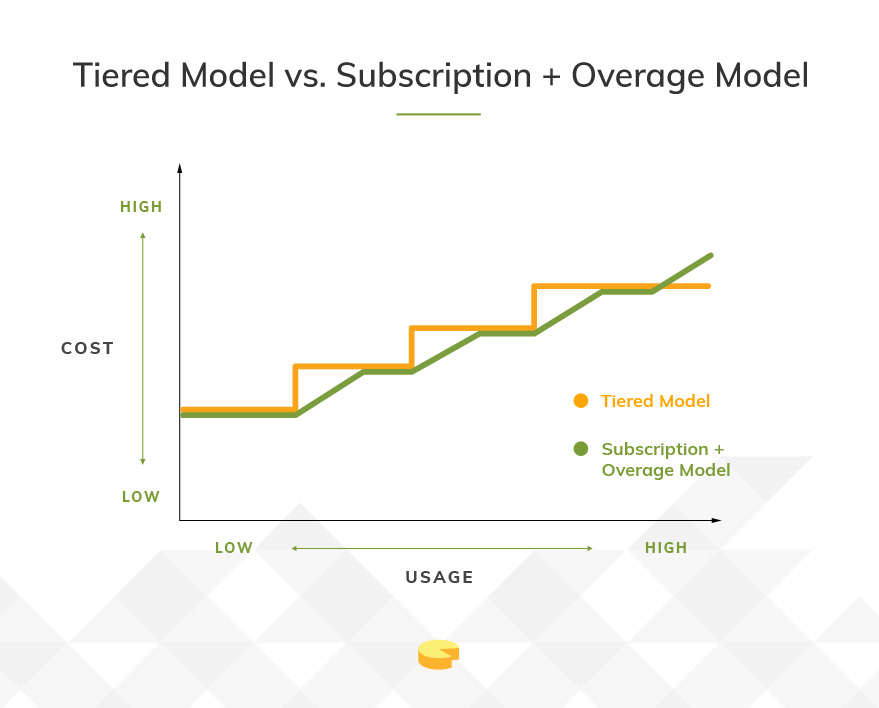
Considerations of Using a Subscription + Overage model
Depending on your product, there are other things to consider when deciding on a subscription + overage model. Knowing how much and when a customer uses your product can help you to decide if this model is for you. Some of these considerations are:
Seasonality
If your product is used less during parts of the year, this model might result in higher churn rates. Customers who don’t see value during these periods of low usage might churn to save money. Depending if your company is B2B or B2C, you might see higher or lower usage levels during:
- Poor weather
- Tax season
- Holidays
These are just a few examples of seasonality, but there’s many other reasons. If you have a seasonal product, it’s worth considering if your pricing might turn away customers.
High cost for low usage customers
If your product is used sporadically, customers might not sign up if they don’t anticipate using your software enough. Even customers with consistent usage might look for alternatives if their cost for their usage level is too high. Customers that don’t anticipate using your product often might be looking for freemium or per-use options.
Subscription + Usage
With this model, your company can charge for a base subscription fee, and then for any additional usage. Depending on your business and customers, charging customers this way might make the most sense for your company.
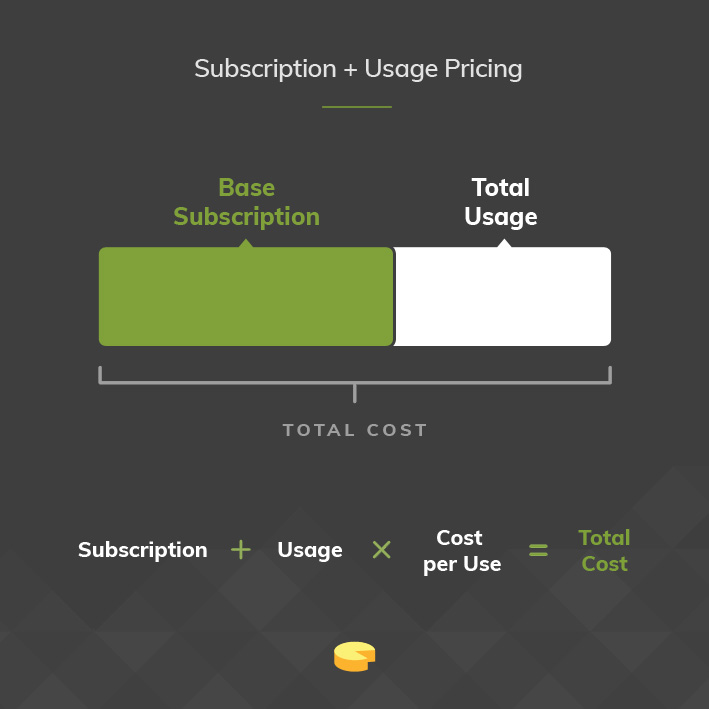
Our favorite example of this pricing model is Cheddar. With Cheddar, once you start billing customers, you pay $99/month, and an additional $.30 per transaction.
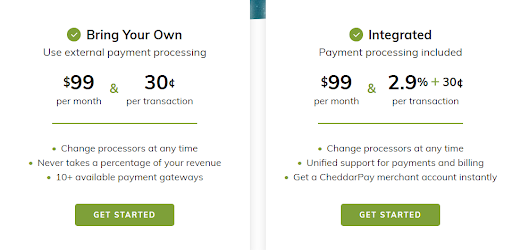
Other industries have also adopted this billing model. For example, companies like Metromile are allowing customers who drive infrequently to save on their auto insurance. Customers just pay a base subscription, and additional fee for each mile driven.
Advantages of Using a Subscription + Usage Model
For a lot of companies, charging a subscription in addition to usage, might help balance out some disadvantages of other SaaS usage-based pricing models. You might also have other costs that don’t necessarily scale with usage. Like the cost of maintaining your product. By adding this additional subscription fee, your company can cover some of these costs. Some of the advantages provided might be:
Your platform costs you
SaaS platforms cost money to create.There are also ongoing development costs for maintaining and improving your product. By charging a base subscription, you are able to help cover these costs to your company.
Scale Your Pricing Easier
Customers who use your product more are getting more value from your product. By charging for usage on top of a subscription, your pricing can scale better across more customer segments.
Decrease your Months To Recover
For a lot of SaaS companies, a large portion of expenses comes from customer acquisition. Because of this, you likely focus on your months to recover. You can charge this base subscription fee in order to help your company reduce months to recover.
Your platform by itself may provide value in addition to what customers use
Finally, your platform might actually do a lot of different things that provide value to your customers. For example, In addition to billing, Cheddar also offers card retries, metric reporting, and customer communications. It might be difficult to bill customers for every way that your company actually provides value. If your company offers value in a lot of different ways, it might be simpler to tack on a subscription. This makes your pricing simpler than scaling your price using a variety of value metrics.
Value metric pricing
Above we mention that you may not charge for all features customers are using that provide value. However, by tracking usage, you can determine which features are most used and most scalable in order to charge accordingly.
Considerations of a Subscription + Usage model
Although a Subscription + Usage pricing model addresses some of the possible disadvantages of a linear pricing model, it doesn’t quite solve all of them. It may actually cause some other issues. Some things to take into consideration are:
Unappealing to small customers
Depending on your target customer, the cost of a base subscription could be a turn off to small customers. Although in the short run, small customers might cost your more, they might be your best long term customers. While this is dependent on your business, it’s worth considering whether a flat rate might turn away smaller customers.
Linear Pricing
Linear pricing is the most granular that your company can get with pricing. Contrary to what some people may think, it’s actually one of the most simple usage-based pricing models. With this pricing model, the cost to the consumer is purely consumption based. This means customers only pay when they use your product. This model can sometimes be referred to as pay-as-you-go pricing, user-based pricing, and consumption-based pricing.
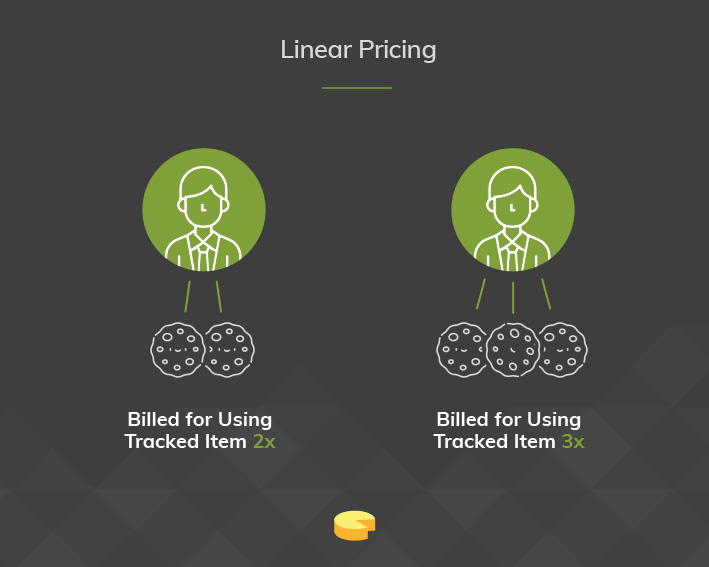
Once you decide what activity to bill for, you just have to track how much a customer uses. Depending on your company, you might charge customers based on the number of:
- Users
- API calls
- Text messages sent
- Etc.
While there’s many value metrics you can track and bill for, you have to decide which make the most sense.
There’s a lot of examples of a linear pricing model. Companies like Asana bill per-seat, while companies like Twillio also have a variety of per-use options. Lets look at Slack’s pricing page as an example:
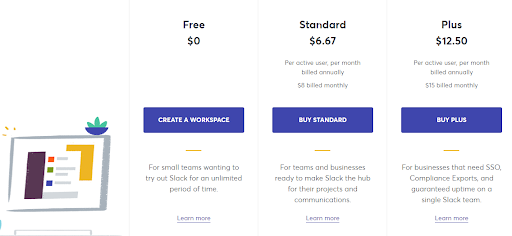
Although Slack also uses tiers, Slack’s pricing scales per user. Each additional user will cost a customer a set fee. The more users, the higher the cost.
Advantages of Linear Pricing
There are many factors that could make a linear pricing model the best fit. Although this pricing model isn’t for every company, there can be some advantages of linear pricing if it makes sense to your company. Some of these advantages are:
Ability to operate profitably
When a company’s costs scale linearly with usage, a linear pricing model might make sense. For some SaaS companies, more usage means more costs. When the revenue is a set percentage above costs, you can be sure your company is operating profitably.
Seasonality
Seasonality is also another possible reason to bill customers per-use. Customers don’t like to pay for something that they don’t use. If your company has little to no usage during parts of the year, you are providing less value. This might cause customers to cancel during certain times of the year, and they might not come back.
Inconsistent usage levels
Customers who use your product sporadically might also be more inclined to use your product. Without a subscription, your product is always available for use when the time comes.
Value that scales with usage
When the value provided by your company scales linearly with the “usage” level, a linear model might make sense. This is commonly seen in team communication, or project management software, where adding an additional user provides more value. Similarly, if usage decreases, and your customer is getting less value, they pay less.
Considerations with Linear Pricing
While there are a lot of good reason to choose a linear pricing model, there’s also some things to consider to decide if it is the best model for your company.
Budgeting issues
One common argument against a linear pricing model is the issues that companies face with budgeting. With better metering tools, we can now price and budget better than ever before. While usage levels may be difficult to budget for at first, over time calculating costs and revenue based on usage becomes more predictable. Simple tools like Microsoft Excel make budgeting for usage easier than ever before.
Incentivising lower usage levels
If customers can’t correlate their usage directly to cost savings or revenue generation, they may use your product less. Customers who don’t see marginal value with each additional use may try to use your product as little as possible. They may also look for a way to workaround your product in order for them to cut usage costs.
Support costs
Customers that use your product or service very little may actually cost your company more than what they pay you. You might spend more time supporting lower paying customers than you earn on your high paying customers. This is especially true if your product is difficult or time consuming to set up. You might even be losing money on these low usage customers, particularly if you have no minimum contract period. If you don’t anticipate your smaller customers growing, this model might not cover costs well.
Wrap up
No matter which model you choose, generally, the more granular your pricing is, the simpler it is to understand. While there are many different usage-based models to choose from, it’s up to you to decide which model is the best fit for your company.
Once you determine a price and pricing model, its important that your pricing doesn’t remain static. Companies are constantly testing ad copy, website copy, and signup flow. It only makes sense to test your pricing as well. If you feel pigeonholed into a certain pricing model, or find yourself building complex pricing, you might be limited by your billing software.
If you need help setting your initial price or iterating your price, check our our Pricing Engagement. In the engagement, Cheddar will help put your pricing on the right track, and create a repeatable process to iterate pricing regularly
About Cheddar
Billing built for developers. Cheddar is a usage-based billing platform that helps you track customer activity, iterate your pricing, and optimize your revenue so you can focus on building awesome products, not billing for them. Made with <3 from the Midwest.